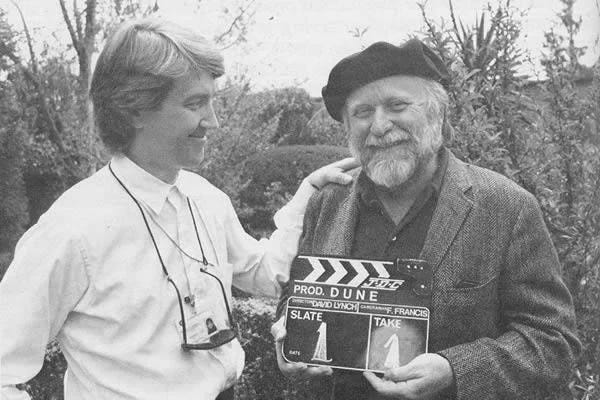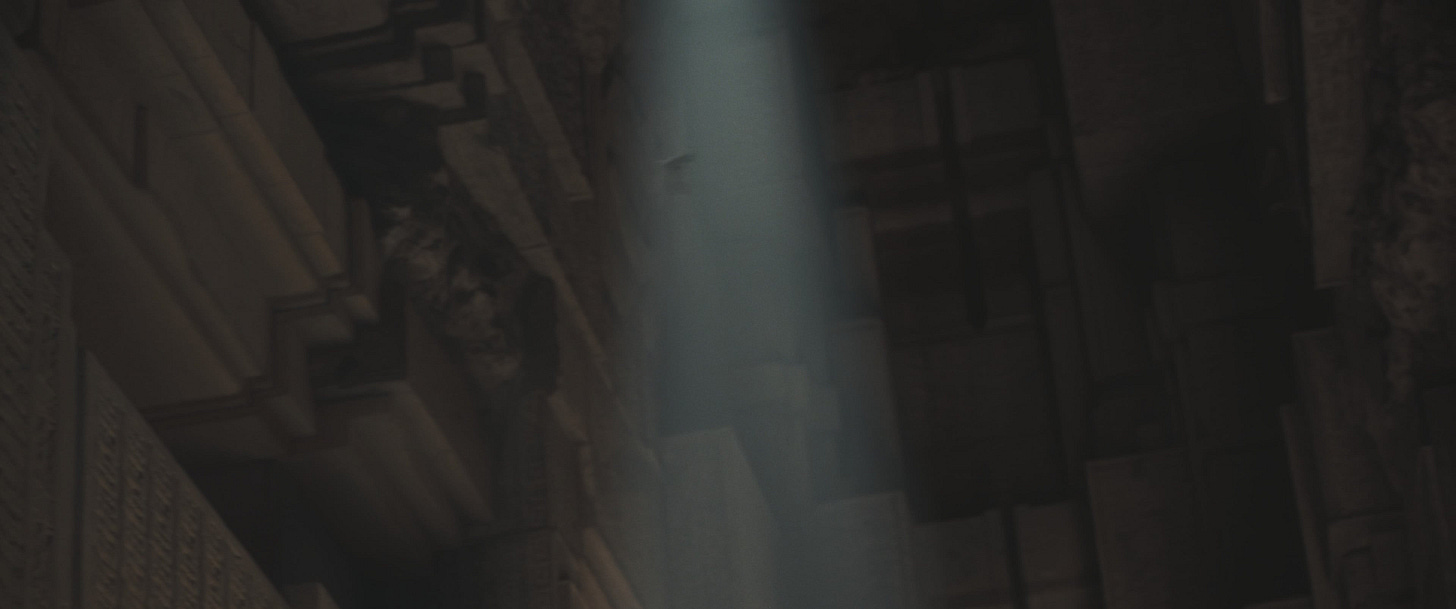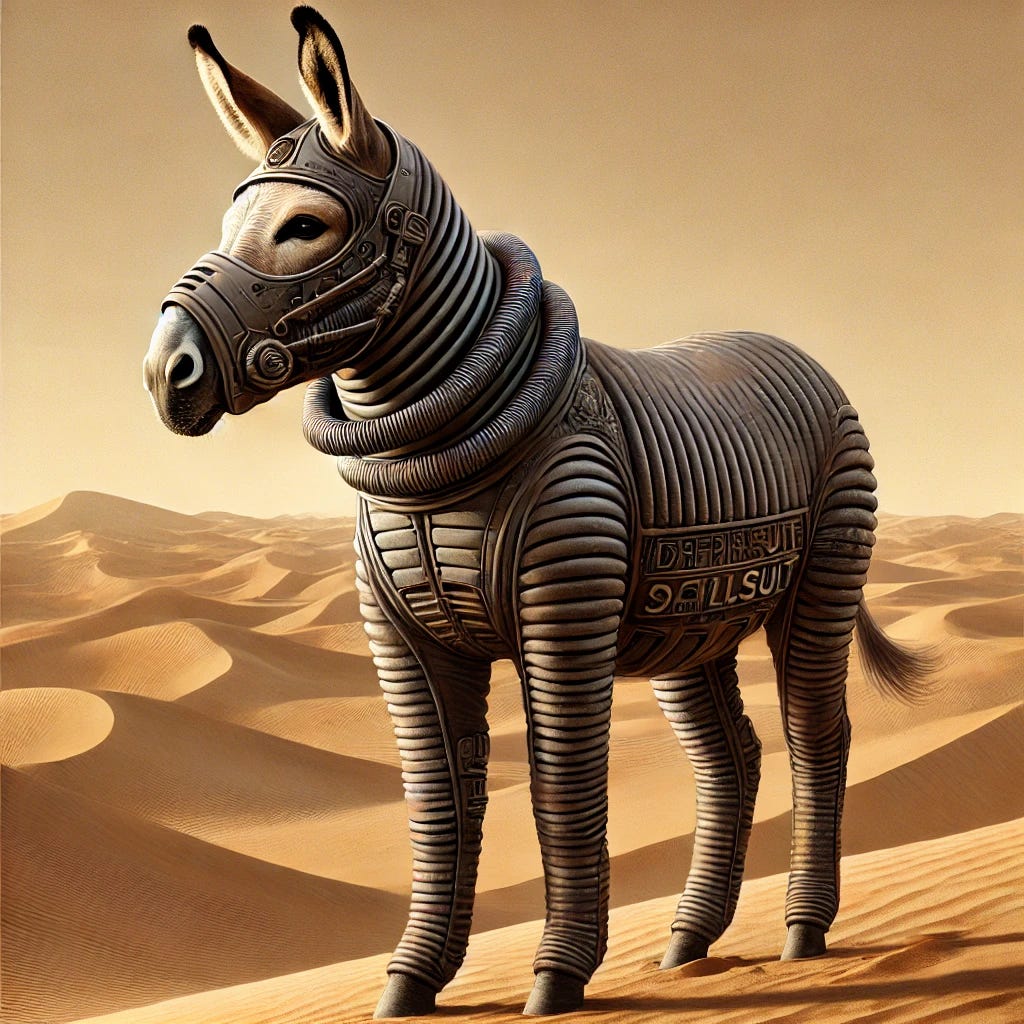The working animals of Dune
There's more to Arrakis than giant sandworms and cute mice. This one's for the unsung (animal) heroes of Dune.
We all know Muad’Dib - the hopping rodent we’d call Jerboa on Earth.
“I will tell you a thing about your new name,” Stilgar said. “The choice pleases us. Muad‘Dib is wise in the ways of the desert. Muad’Dib creates his own water. Muad‘Dib hides from the sun and travels in the cool night. Muad’Dib is fruitful and multiplies over the land. Muad‘Dib we call ’instructor-of-boys.’ That is a powerful base on which to build your life, Paul-Muad’Dib, who is Usul among us. We welcome you.”
But like a toddler at Halloween, Paul could have chosen from a menagerie of desert animals to cosplay as.
In today’s newsletter:
Dune News
The working animals of Dune
Cielago Bats
Kulon asses
Predator fish
In the original Dune, Frank Herbert sets up a really subtle piece of foreshadowing that only pays off if you continue reading past the story’s end and are willing to check out the various appendices.
At the very beginning of the book, before leaving Caladan, Dr. Yueh gives Paul a filmbook on Arrakis’ ecology and makes this comment:
The planet seems to have opened its arms to certain terranic life forms. It’s not clear how. I must seek out the planetary ecologist when we arrive — a Dr. Kynes — and offer my help in the investigation.
You only need to keep this in mind for a few hundred pages. Once you get to Appendix I: The Ecology of Dune, you realize that the good Dr. Kynes wouldn’t have needed any help with that investigation.
It was his father, Pardot Kynes, who started the terraforming efforts, which Liet-Kynes continued working on - with the active support of the Fremen.
They turned then to the necessary animal life — burrowing creatures to open the soil and aerate it: kit fox, kangaroo mouse, desert hare, sand terrapin… and the predators to keep them in check: desert hawk, dwarf owl, eagle and desert owl; and insects to fill the niches these couldn’t reach: scorpion, centipede, trapdoor spider, the biting wasp and the wormfly… and the desert bat to keep watch on these.
And while the fluid stability of the ecological system is awe-inspiring, I’d like to focus on the unsung heroes: the working animals that deserve way more recognition.
Dune News
‘Dune: Part Two’ Leads Visual Effects Society Nominations [The Wrap]
How Dune: Prophecy Is Setting Up Dune Messiah [Game Rant]
5 Reasons To Be Optimistic For Dune: Prophecy Season 2 [Screen Rant]
David Lynch dies at 78 [Variety]
Do you know anyone who likes to nerd out about Dune?
The working animals of Dune
Cielago Bats
These furry little creatures are the Fremen’s primary way of communication.
Imagine a homing pigeon, but instead of tying a written note to the body, Fremen use so-called “distrans” devices to imprint a message on the bats’ nervous system.
This modifies the animal’s normal cry to carry the message imprint, which can be deciphered by another distrans device.
And while bats are my personal favorites, anything with a nervous system can carry a distrans - some sietches use birds, but throughout the books, we’ve seen messages implanted in humans as well.
Kulon Asses
If there’s one thing I sorely missed from the movie adaptations, it’s a donkey in a stillsuit.
The only place to find a description of this majestic beast of burden is, again, Appendix I of the original Dune.
Pets were almost unknown, stock animals rare. Some smugglers employed the domesticated desert ass, the kulon, but the water price was high even when the beasts were fitted with modified stillsuits.
Whether it’s the Lynch or Villeneuve version, the cuteness rating of the movies would’ve been through the roof.
Predator Fish
Yes, indeed: fish on Arrakis.
Keep reading with a 7-day free trial
Subscribe to Dune Navigator to keep reading this post and get 7 days of free access to the full post archives.






